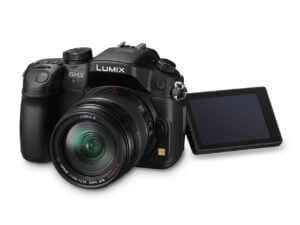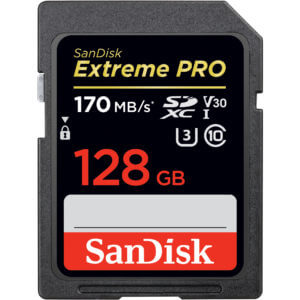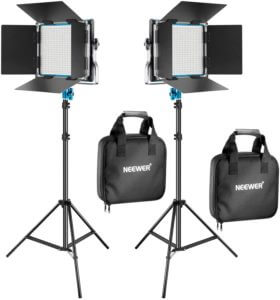Behind the Scenes
How We Create Aleph with Beth Videos
We would love to see more people doing what we’re doing. And we know there are people out there with the ability to teach Greek or Hebrew (or perhaps other languages), but maybe they think that they can’t afford the equipment to make quality videos and post them for free. Others may think that it’s too complicated to learn how to film and edit video. So if you’re one of those people, we’re glad you’re here! This page is here to show you that it doesn’t take thousands of dollars and access to “professionals” to do what we’re doing. We want to share everything we’ve learned, all the exact tools we use, and how you can get started on a low budget.
If you’re interested in teaching the biblical languages, we want to encourage you to please make your videos available for free under a creative commons license or public domain, with no paywalls or ulterior motives of building an income funnel. Read our Why Free? page for more information.
Time & Planning Cost
Cameras

Accessories
 You’ll need a fast SD card for your camera. We recommend and use these, which are around $37. You can get a 64GB one for cheaper if you’re on a budget. That’s what we started with. You’ll also need a tripod. We started out with this $30 one, and it does everything you need. Now we have a Davis & Sanford Provista tripod (about $130 used from eBay) that is more expensive, but gives you the ability to do more professional pans and is more sturdy in general.
You’ll need a fast SD card for your camera. We recommend and use these, which are around $37. You can get a 64GB one for cheaper if you’re on a budget. That’s what we started with. You’ll also need a tripod. We started out with this $30 one, and it does everything you need. Now we have a Davis & Sanford Provista tripod (about $130 used from eBay) that is more expensive, but gives you the ability to do more professional pans and is more sturdy in general.Lens
 For those who are just learning about the world of film-making, it can be surprising how much good lenses cost. Our advice: bite the bullet and just accept the fact that lenses are going to be expensive, and may even cost more than your camera. The lens we use is the Panasonic LUMIX G Vario 12-60mm f/3.5-5.6. It’s versatile and does everything we need. We got a used one on eBay for $220. But you know what? If you can’t afford that to start with, just get this lens for only $27.99! That’s what we started with, and it works! And it even has a nice, cinematic feel to it. The bottom line: take the time to learn how to use your equipment well and experiment, and that’s what will ultimately make your videos look professional. Professional equipment that costs thousands of dollars can produce poor results if the user doesn’t take the time to learn how to use it.
For those who are just learning about the world of film-making, it can be surprising how much good lenses cost. Our advice: bite the bullet and just accept the fact that lenses are going to be expensive, and may even cost more than your camera. The lens we use is the Panasonic LUMIX G Vario 12-60mm f/3.5-5.6. It’s versatile and does everything we need. We got a used one on eBay for $220. But you know what? If you can’t afford that to start with, just get this lens for only $27.99! That’s what we started with, and it works! And it even has a nice, cinematic feel to it. The bottom line: take the time to learn how to use your equipment well and experiment, and that’s what will ultimately make your videos look professional. Professional equipment that costs thousands of dollars can produce poor results if the user doesn’t take the time to learn how to use it.
Microphone

Lighting
 The kind of lighting you have will be the difference between something looking amateur or awesome. Even a $10,000 camera will give you bad results if your lighting is bad. You should expect to spend a minimum of $200 on lighting. We recommend this $169 kit by Neewer. But if you can’t afford that yet, get two of these bulbs, and put them in these clamp reflectors. Then to diffuse the light you can use white, semi transparent plastic bags or pieces of a cheap, white shower curtain taped over the front of the light. We’ve done both, and it works! In the video above you can see just how many lights we are using.
The kind of lighting you have will be the difference between something looking amateur or awesome. Even a $10,000 camera will give you bad results if your lighting is bad. You should expect to spend a minimum of $200 on lighting. We recommend this $169 kit by Neewer. But if you can’t afford that yet, get two of these bulbs, and put them in these clamp reflectors. Then to diffuse the light you can use white, semi transparent plastic bags or pieces of a cheap, white shower curtain taped over the front of the light. We’ve done both, and it works! In the video above you can see just how many lights we are using.Computer
You can get extremely powerful computers these days for $300-400. We recommend getting a desktop PC and a lot of storage space. Buy a 4-8 TB external drive as a backup, and make sure you get a computer with a solid state drive (SSD). If you can, get a computer running an AMD processor, since they are cheaper and faster than Intel now. We currently use a Dell XPS tower that we bought used on eBay. We upgraded it with a GeForce 1060 graphics card (GPU) so that we could run the game Assassin’s Creed Origins that you see in our videos. Here are some specs we recommend:
- 1TB solid state drive (SSD) or bigger
- AMD Ryzen 7 or Intel i7 processor or higher
- 32GB or more of memory
- (Optional if you plan to record gameplay of something like Assassin’s Creed: an Nvidia RTX 3060 or higher)
Monitor
There are lots of different monitors out there. We currently have a $100 21in Samsung 1080p monitor as a second monitor, and a 27in 4K AOC monitor, which cost $249 as our primary editing monitor. Your screen doesn’t matter starting out, but as you grow you may want to invest in a monitor that’s more color accurate as we have (after making 50 videos).
Also, it’s important to have a camera monitor to make sure your colors and focus are good before filming. It also helps when filming yourself. We use this one by FeelWorld which costs around $160. It’s surprising how much these little screens cost, but we promise that it will be worth the investment. We struggled a lot before we got one, and it made our filming much better.
Editing Software
Stock Footage, Images, and Music
YouTube Fair Use Policy
Fair Use is a U.S. law that allows the reuse of copyright-protected material under certain circumstances without getting permission from the copyright owner (learn more here). YouTube simply would not exist if this was not possible. Essentially, if you’re not charging for your content, it’s for educational purposes, and the borrowed content is clearly part of your own unique creative work, then you can use movie clips and clips from other YouTube videos without a problem. This opens up thousands of options for creativity. How do you download YouTube videos to use in your teaching? With this.
Resolution & Framerate
Plan to film in 1080p (also known as Full HD), which is more manageable for your computer and storage than 4K. After editing the video, we then export it in 4K so that the onscreen text is extra crisp and future-proof.
We film at 30 frames per second (known as “30p” in tech-speak). Many people online will tell you to film in 24p, which we used to do. But we have been persuaded by this video that 30p is better overall for teaching purposes.
Teleprompter
We occasionally use a teleprompter to make promotional videos that we have scripted. You could also use one for your lessons if you’re not as good as Beth at memorizing everything. We made our own teleprompter at home for less than $10. Here’s a video (among many) on how to make one yourself if you’re on a budget. Otherwise, if you need one, you can get one for around $100-200 on Amazon. Here’s one on the cheaper end. The one we use is the size of an iPad pro. If you choose another setup with the camera closer to you, then you could use your phone as the teleprompter like this. There are lots of free apps that display the teleprompter text in reverse and allow you to control the scrolling. We use this one, but there are probably better options if you used an Android tablet.
Toys & Props
Where to Start Learning
- DSLR Video Shooter
- Curtis Judd (on sound, mics, and lights)
- Parker Walbeck
Content
6. Don’t forget the kids! Along the same lines as number five, this one is important. Kids can learn the biblical languages too. Keep children in mind as you design and develop your lesson videos. Ask yourself, Is this something an eight-year-old would be delighted to watch? Would it make them giggle?
7. Don’t build your lessons around paradigms. This is the temptation for nerdy grammar-lovers. Resist it! Keep the learning process natural and organic. You might focus on a specific grammar point in a specific lesson, but you’ll have to work extra hard to keep it engaging. Move into storytelling as soon as possible, since that is what everyone finds most compelling.
8. Don’t neglect Stephen Krashen’s teaching on language acquisition. Listen to everything you can by him on YouTube. Internalize his principles and flesh them out in your teaching.
9. Don’t be too predictable. Surprise people, and that will delight them and keep them watching. Endeavor to stay fresh and out of the rut. Try new things and new lesson structures.
10. Don’t go too fast. The temptation for nerdy language lovers is to believe that everyone can keep up with them. Slow. Way. Down. Both in your speaking speed and in your pace for adding new information. People will thank you for it. Keep your weaker brothers and sisters in mind.
11. Don’t assume people learn new words as quickly as you. Use a lot of repetition even if you think it’s overkill. Believe us, people will appreciate it. This is hard for geniuses to do, but it’s essential. Also remember that when you’re planning, filming and editing a lesson, you’re hearing that word or phrase dozens of times until you’re sick of it, but your viewers are encountering it for the first time, and they need generous processing time for it to stick.
12. Don’t use the same images or clips too often or for too long. Variety, variety, variety! Along those same lines, don’t use cheesy, low-quality images! The internet is already flooded with “Christian” artwork that will make your eyes bleed. Keep things classy, beautiful, tasteful.
13. Don’t spend time explaining the grammar in English on camera. There are tons of other resources and YouTube channels out there already that are dedicated to talking about Greek or Hebrew in English. Instead of repeating information that someone could easily look up in a textbook or online, spend your precious time doing what hasn’t been done before. What we DON’T have (and really need) are simple, compelling materials showing the biblical languages in action for people to acquire these beautiful languages from square one! Most of your audience will start zoning out once you start explaining grammatical terms, and explanations in English interrupt the immersive learning experience. Also, if you don’t use English, but only the target language, you’ll make your videos accessible to millions more people worldwide who want to learn the biblical languages but may not understand English!
Lesson Planning
Write out a list or outline of vocabulary, topics and grammar points that need to be taught in a rough order from basic to complex. This will help you have a clear direction as you work toward the more complex structures you want to teach. You don’t have to flesh out your plans in minute detail at the beginning, and you don’t have to stick to what you write down now! It’s just a general direction, and your plans will probably change by the time you get there. My lesson sequence turned out quite different in reality than how I envisioned it in my first planning spreadsheet, and that’s fine! If you make detailed plans for each lesson far in advance, you’ll probably find that you have to significantly revise them later because your teaching path will change along the way as you encounter practical limitations of time and repetition that you couldn’t foresee.
- new ways to remix old vocab
- ways to combine new vocab with old vocab
- ways to combine new vocab with old grammar structures
- ways to combine old vocab with new grammar structures